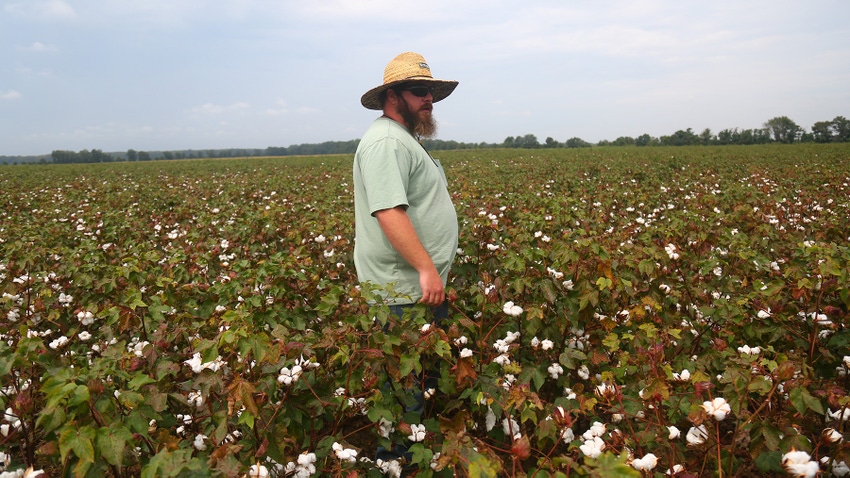October 2, 2023

At a Glance
- Arkansas cotton acres fell 25 percent in 2023
- 2023 has proved a strong growing season thus far
- Rains throughout the summer made disease management a challenge
While cotton acreage may have dropped off across the country and throughout much of Arkansas in 2023, some pockets of the state bet heavily on the fiber and may end up reaping the rewards.
Nationally, cotton acreage fell 19 percent this year to an estimated 11.1 million acres, according to the U.S. Department of Agriculture’s June 30 Acreage Report. In Arkansas, acreage fell by 25 percent to 480,000 acres. But some counties, including Clay County in northeastern Arkansas, saw substantial increases in cotton acreage.
Stewart Runsick, Clay County extension staff chair for the University of Arkansas System Division of Agriculture, said that in 2022, growers in his county planted 43,645 acres of cotton — more than 6,000 acres above the five-year average — and he believes growers planted even more in 2023.
“Cotton acres continue to increase in Clay County,” Runsick said. “I expect acres to remain strong as long as the price is favorable.”
Planted early
Runsick said most of Clay County’s cotton was planted early this year, during the relatively cool temperatures of early May. The county has seen good stands throughout the growing season, he said.
“The main problems have been related to insects and diseases,” Runsick said, noting high plant bug numbers in July and early August, requiring multiple pesticide applications to achieve control.
Chris Tarno, a crop consultant based in Clay County, said many growers battled target leaf spot in all cotton varieties, and verticillium wilt “absolutely started hammering the cotton on the white dirt.” White dirt is a kind of silt loam soil found in the region.
Periodic rains throughout the summer made it difficult to control insects or disease, Tarno said, although the crop appears to have survived the worst of it.
“It looks like most of the cotton is going to be good,” he said, noting that verticillium wilt tended to let up as the summer rain decreased.
Eighty-five percent of cotton acreage in Arkansas has seen open bolls as of Sept. 17, according to USDA. That’s slightly ahead of the five-year average for this point in the season, but if the harvest efforts for other row crops in the state are any indication, producers will gather steam quickly once picking efforts begin.
Leisurely harvest?
Joe McAlee, extension cotton verification program coordinator for the Division of Agriculture, said that with a target completion date of Nov. 1, growers with early-planted cotton will likely have a harvest that, if not necessarily “leisurely,” will at least be free of deadline anxiety.
“If I had my way, I’d start harvesting in mid- to late September,” McAlee said. “But if you’re not able to start your harvest until mid-October, that’s a tighter deadline. The thing we start running into then is that when temperatures start dropping, we start losing plant activity.
“Early on, we had a two-to-three-week planting window in which about 90 percent of the cotton probably got planted,” McAlee said. “If you planted on the front end of that, you had good moisture. If you were on the back end of that and needed to get water on it, those fields were about two weeks behind in their growth — they just sat there.”
McAlee said most cotton growers in the Delta have faced the same insect and disease pressures as those seen in Clay County, as well as some instances of bollrot and hardlock, which is also tied to repeated rain events.
“As the cotton bolls started opening, there have been some fields that have issued with hardlock — that’s when the boll is just barely cracking open, and water gets down in there,” McAlee said. “Rain, even a heavy dew, will do it, and it causes a mold to grow on the outside of a lock of cotton. The cotton’s perfectly fine, but the picker will never pick it up.”
In December of 2022, the USDA calculated average cotton yield in Arkansas at 1,181 pounds per harvested acre, a drop of 67 pounds per acre from the year before. The state produced 1.55 million bales of cotton, second only to Texas in the United States.
Source: University of Arkansas System Division of Ariculture
About the Author(s)
You May Also Like






